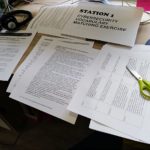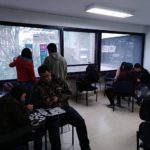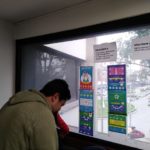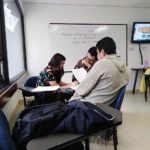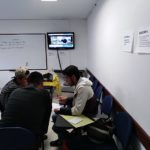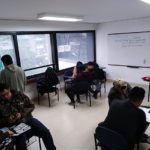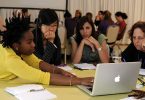--Originally published at CAROLINA R BUITRAGO
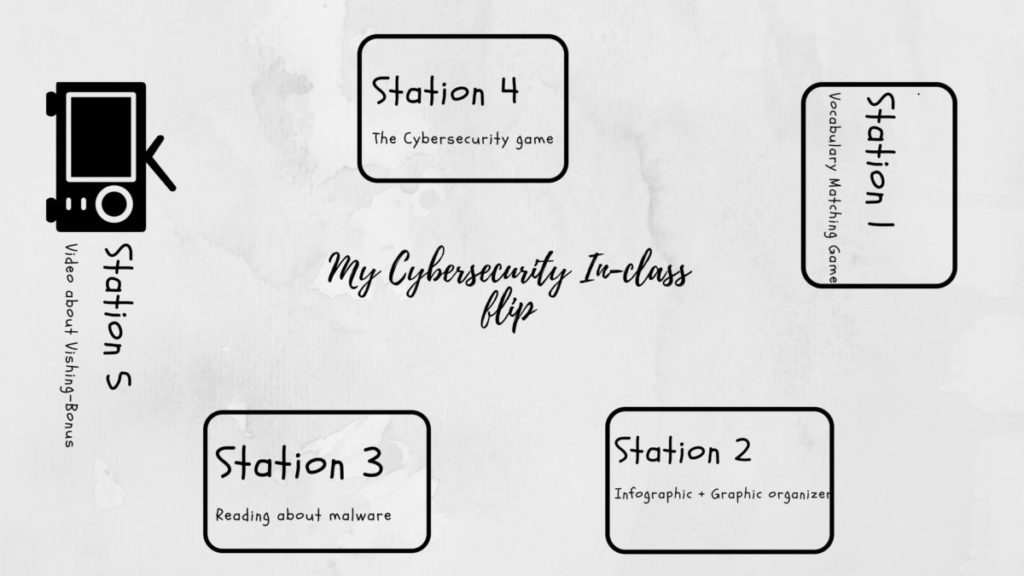
I have been working with my colleague, Martha Ramirez, on our book about in-class flip (coming soon) and I have reflected that outside of the book, I haven’t written any experiences here, in my blog, about the in-class flips I’ve done. What a shame! So I thought it was time for me to tell you a couple of my in-class flips and to give you resources and the plan for you to do your own. If you don’t know what an in-class flip is, I suggest you to start by reading this blog post by Martha. Do I have you back? Awesome! Let’s get started!
I’m going to first tell you about the in-class flip I did in my micro-teaching middle education class (a class about how teenagers learn) about cybersecurity. So, because I didn’t have a lot of time to have students access the materials on their own and then discuss them in class, I decided to optimize my time and lesson by planning an in-class flip.
I thought of the materials that my students needed in order to gain full understanding of this important topic for their life as future teachers of teenagers. As we had already worked on CyberBullying through another activity, I decided to focus on Cybersecurity.
In order to tackle this topic, the stations and contents planned were:
- A Cybersecurity vocabulary matching exercise
- An infographic about cybersecurity and social media and a graphic organizer (Cluster)
- A reading about protecting yourself from malware from the Canadian Internet Registry Authority (CIRA) with a graphic organizer (Step by step)
- The Cybersecurity game proposed by Media Smarts
- A video about Vishing
You can find all the materials, including the signs for the stations in this Google folder. Feel free to make a copy of the documents and modify them as you see fit, but give credit when credit is due.
The Planning Process
When I plan an in-class flip, I first try to imagine the physical space set up, so I normally draw it on a piece of paper. Below you can see the rough sketch I made of the in-class flip I’m describing in this post. I need to physically locate the stations in the classroom and the activities in order to know how things will flow and what I have to organize as soon as I arrive in class.
The classroom I had was pretty small, but it still allowed me to organize all of the stations. As most of my stations were paper-based, I just set the previously prepared envelopes with the papers on tables for students to open and start working. I put the labels with the Stations and the instructions up on the wall or window by the chairs where students would be sitting to work.
I made groups (four groups of three students, I had 12 students in that class) and planned a mixed configuration with five stations (the last one was a “bonus station” for fast finishers). I asked students to rotate with their groups, so that everybody got to do all of the activities planned during the time assigned for class (one hundred minutes). I made sure all of the activities took approximately the same time to complete, so there were no students lagging or disengaged. Anyway, I planned the fast finishers station. We didn’t get to use it as a station, so I decided to use it as a wrap up activity we did altogether at the end of the class.
Students were very enthusiastic about the topic and got to discuss the topic at a deep level. When they finished the rotation, we still had time to do the Vishing video together and to discuss the implications that the openness of the internet has on teenage learners. Students reflected about the importance of communicating with teenagers’ parents and with kids in class about the risks of the internet. It was a very fruitful experience.
I have always used the in-class flip when I need to get students extremely focused on what we are doing. It is a great strategy for me to teach a topic in the syllabus in a session since we can tackle many more materials and go deeper in the reading and work of each one.
My Recommendations for your In-Class Flips
- Time the work students do on each station. Looking at the timer puts some healthy, focusing pressure on students making them to work on their tasks without distraction.
- As my friend Martha says, Seize the chaos! Students might get a little confused as to what to do and how to start, but this confusion at the beginning, leads to more focus once they start working.
- Provide good instructions. Clearly written instructions are crucial for students to be able to work on their own and to understand what they are expected to do.
- Plan a fast finishers station. Students won’t feel rushed to finish if they know there’s still something to do if they finish early. There is no benefit in finishing first, so they devote more time and attention to the station they are in.
- Save time for a debriefing after the in-class flip. I have found it very beneficial to set some time aside for discussion and reflection on what happened in the in-class flip. Students sometimes have questions or comments they wanted to share with the whole class, so it is important to open that space.
Thanks to my Micro-teaching Middle Education students for allowing me to take pictures of them as they worked. 

